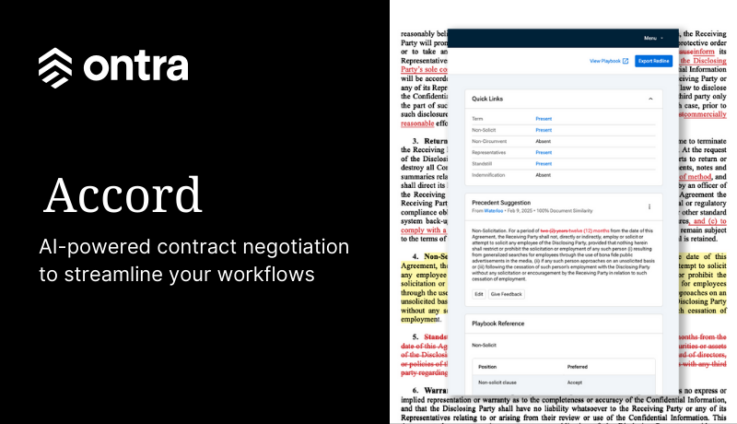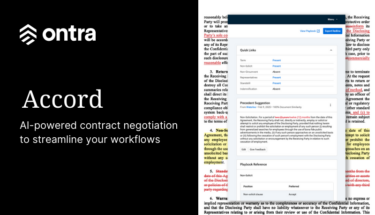Private fund managers and investment banks are digitally transforming their contract management processes to streamline repetitive workflows and improve their contract cycle time.
What is contract cycle time?
The contract cycle time is the average duration it takes to finish a contract from starting a draft through execution, including revisions, approvals, and signatures. Investment firms can calculate it from when they receive or send a draft to when all parties have signed the final agreement.
The importance of contract cycle time
Calculating the average contract cycle time for different contract types, such as NDAs, joinders, non-reliance letters, and vendor agreements, offers visibility into what fund managers and investment banks may do well or what’s slowing them down.
Contract cycle time is an important metric in evaluating how well a firm is managing contracts, particularly high-volume agreements. The longer the contract cycle time, the more likely a firm is facing (or creating) unnecessary delays. The shorter the contract cycle time, the more efficient the firm’s negotiation and approval processes.
Why contract workflows matter to private fund managers
Private fund managers and investment banks are facing intense competition; there are more registered private funds than ever competing for the same investors and deals. According to the latest data from the SEC, the U.S. had 50,612 registered funds with a total of $24.3 trillion gross assets in Q3 2024 — a significant increase from just five years ago.
As a result of intensifying competition, fund managers and banks are examining their internal processes to determine what might be slowing them down and holding them back.
For example, a slow contract cycle time on private equity NDAs could create a far bigger disadvantage now than it did a decade ago.
A lengthy NDA process can:
- Delay due diligence
- Prematurely end a potential deal
- Create reputational risk
Overall, private fund managers are interested in moving quickly through the initial contract lifecycle with accuracy and consistency.
3 ways to reduce contract cycle time
The best way to achieve shorter contract turnaround times and faster execution is through purpose-built technology. Advancements in GenAI and contract AI enable firms to swiftly complete routine contracts.
1. Adopt a contract negotiation solution
Implement a purpose-built contract negotiation solution. With the right technology, firms can save contract playbooks to standardize contract terms. Firms can also standardize and streamline contract creation workflows and rely on automation features, such as triggered emails and alerts.
2. Standardize contract provisions
Outline boilerplate, preferred, and fallback terms for the most common contract provisions. Formalize these as a digital contract playbook that is readily available to all internal stakeholders participating in the contracting process.
Standardized terms ensure consistency across the organization’s agreements, which can drastically reduce the number of provisions that stakeholders actively negotiate, enabling them to finalize contracts faster.
3. Outsource high-volume contracts
Find a trusted legal outsourcing partner. Private fund managers and banks often don’t have the time to handle a high volume of routine contracts in-house without working into their evenings and weekends. They may attempt to send these agreements to outside counsel, but face high fees for negotiations handled by junior associates. Instead, firms can combine the use of a contract negotiation solution with legal outsourcing for a more cost-effective solution.
What affects contract cycle time?
Lack of predefined terms: Speed up the contracting process by developing a library of contract or provision templates and establishing preferred and fallback stances. Firms that haven’t formalized this information force their stakeholders into unnecessary and time-consuming revisions and negotiations.
Inability to review historical terms: Refer to previous agreements to promote consistency, simplifying a firm’s contract compliance efforts when it pursues the same or vastly similar commitments with other parties. However, many firms can’t quickly search and review precedents, and manually reviewing previous agreements prolongs negotiations.
Lack of standardized workflows: Internal stakeholders or external counsel should know the contract creation process, including who provides approvals and when and where to escalate unique issues. Without an established workflow, internal stakeholders have to track down whoever is responsible for the next step in the process.
Lack of automation: Many firms continue to rely on traditional contract management practices and ad hoc tools. Instead of taking advantage of contract management automation, someone must proactively handle each step of the process, including emailing reminders when another party is slow to respond.
Contract complexity: Managers and banks can do little to control the complexity of an agreement. Side letters, for example, have become more common and include more and longer provisions than a decade ago. Negotiating more bespoke agreements typically takes longer than routine contracts with highly standardized terms.
Number of parties involved: Though a contract may be between two businesses, it might involve several internal and external stakeholders, including business professionals and lawyers. Typically, the more people involved in negotiations and approvals, the longer it takes to finalize the agreement.
Parties’ bandwidth: Routine contracts often distract internal stakeholders from their other, more strategic work. Busy professionals may inadvertently delay contracts because they are an additional task on top of their high-priority workloads.
Time zones: Private fund managers and investment banks working globally often encounter challenges between different geographic areas and time zones, particularly when they lack local offices in multiple jurisdictions.
The wait for signatures: The final step in the contract creation process often causes delays, particularly if the agreement requires signatures from stakeholders not actively involved in the negotiation process.
Speed up contract negotiation with Ontra
Ontra’s platform includes two contract negotiation solutions. With Contract Automation, independent legal professionals negotiate our customers’ agreements while leveraging our AI-powered contract negotiation solution.
With Accord, our customers bring our AI solution in-house.
By leveraging either option (or both), reduced cycle time is the direct result of:
- Standardized contract terms
- Digital contract playbooks
- AI surfacing historical contract information
- Automated redlining
- Suggested markups
- Side-by-side document comparison
Ontra’s AI-enabled contract negotiation solutions offer a powerful human-in-the-loop approach. Cutting-edge technology streamlines and automates repetitive contract workflows, while review over AI outputs ensures high-quality outcomes for every contract.









